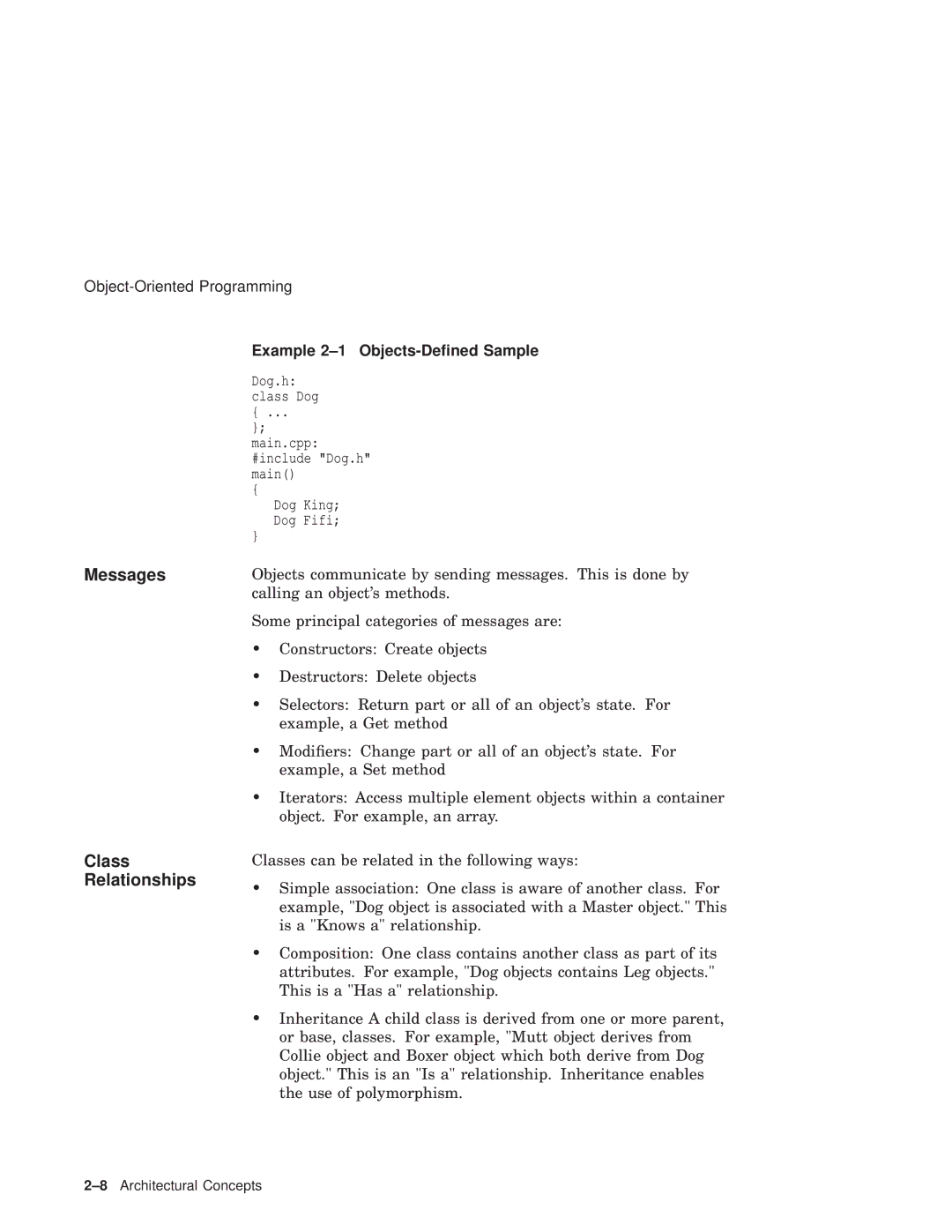Object-Oriented Programming
Messages
Class Relationships
Example 2–1 Objects-Defined Sample
Dog.h: class Dog
{...
};
main.cpp: #include "Dog.h" main()
Dog King; Dog Fifi;
}
Objects communicate by sending messages. This is done by calling an object's methods.
Some principal categories of messages are:
•Constructors: Create objects
•Destructors: Delete objects
•Selectors: Return part or all of an object's state. For example, a Get method
•Modifiers: Change part or all of an object's state. For example, a Set method
•Iterators: Access multiple element objects within a container object. For example, an array.
Classes can be related in the following ways:
•Simple association: One class is aware of another class. For example, "Dog object is associated with a Master object." This is a "Knows a" relationship.
•Composition: One class contains another class as part of its attributes. For example, "Dog objects contains Leg objects." This is a "Has a" relationship.
•Inheritance A child class is derived from one or more parent, or base, classes. For example, "Mutt object derives from Collie object and Boxer object which both derive from Dog object." This is an "Is a" relationship. Inheritance enables the use of polymorphism.
